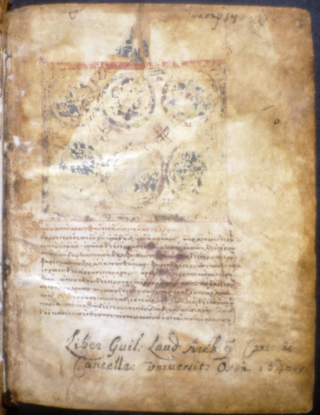Top Qs
Timeline
Chat
Perspective
Minuscule 53
New Testament manuscript From Wikipedia, the free encyclopedia
Remove ads
Minuscule 53 (in the Gregory-Aland numbering), ε 444 (Von Soden),[1] is a Greek minuscule manuscript of the New Testament, on parchment leaves. Palaeographically it has been assigned to the 13th or 14th century.[2][3] It has marginalia.
Remove ads
Description
The codex contains complete text of the four Gospels on 140 leaves (size 15.5 cm by 11.5 cm).[2] The text is written in one column per page, 29-33 lines per page. The initial letters in red ink.[4]
The text is divided according to the κεφαλαια (chapters), whose numbers are given at the margin, with the τιτλοι (titles of chapters) at the top of the pages. There is no a division according to the Ammonian Sections with references to the Eusebian Canons.[4]
It contains Prolegomena, and subscriptions at the end of each Gospel.[5][4]
Remove ads
Text
The Greek text of the codex is a representative of the Byzantine text-type. Kurt Aland placed it in Category V.[6] According to the Claremont Profile Method it represents Kx text in Luke 1 and Luke 20. In Luke 10 no profile was made. It creates textual pair with 902.[7]
Textually it is close to Minuscule 271.
History
The name of scribe was probably Nicholaus (?). The manuscript was examined by John Mill (Selden 1).[4] C. R. Gregory saw it in 1883.[4]
It is currently housed in at the Bodleian Library (Selden Supra 28), at Oxford.[2]
See also
References
Further reading
Wikiwand - on
Seamless Wikipedia browsing. On steroids.
Remove ads

